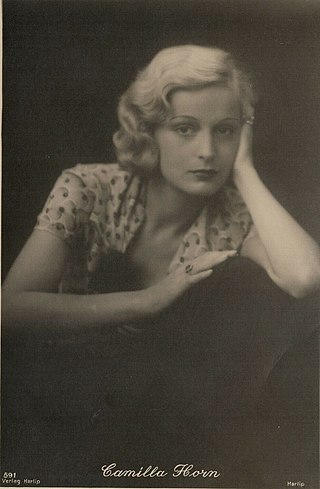
Camilla Martha Horn was a German dancer and a film star of the silent and sound era. She starred in several Hollywood films of the late 1920s and in a few British and Italian productions.
Karl Hermann Martell was a German actor.

Fridericus is a 1937 German historical film directed by Johannes Meyer and starring Otto Gebühr, Hilde Körber and Lil Dagover. It is based on the life of Frederick II of Prussia. It was part of the popular cycle of Prussian films and was shot at the Halensee Studios in Berlin and on location in Brandenburg. The film's sets were designed by the art directors Otto Erdmann and Hans Sohnle.
Paul Karl Heinrich Klinksik was a German stage and film actor who also worked in radio drama and soundtrack dubbing.
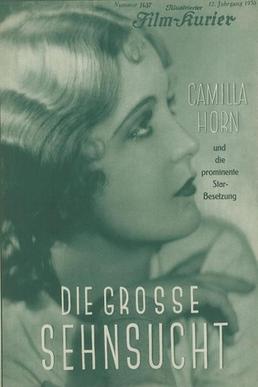
The Great Longing is a 1930 German comedy film directed by Steve Sekely in his directorial debut and starring Camilla Horn, Theodor Loos, and Harry Frank. It was shot at the EFA Studios in Berlin. The film's sets were designed by the art directors Hans Sohnle and Otto Erdmann. It was distributed by the German branch of Universal Pictures.

D III 88 is a 1939 German drama film directed by Herbert Maisch and Hans Bertram, the latter also co-writing the script. It stars Christian Kayßler, Otto Wernicke and Heinz Welzel. It was made as a propaganda film with the support of Luftwaffe chief Hermann Göring, and was the last of a series of Nazi aviation films to be made before the outbreak of World War II. It was one of the most commercially successful films released during the Nazi era. It was praised by Joseph Goebbels as "an irreproachable film of national destiny". The title, referring to the serial number of the Albatros D.III flown by one of the characters in the World War I, was an attempt to re-inforce the propaganda link between the modern Luftwaffe and that of World War I. A sequel, Battle Squadron Lützow, was made in 1941.
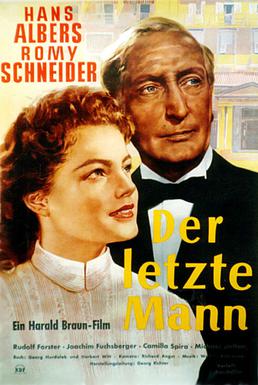
The Last Man is a 1955 West German drama film directed by Harald Braun and starring Hans Albers, Romy Schneider and Rudolf Forster. The film is a remake of the 1924 Weimar silent The Last Laugh, with the setting updated to post-war Germany.

Back Then is a 1943 German drama film directed by Rolf Hansen and starring Zarah Leander, Hans Stüwe, and Rossano Brazzi. The film's sets were designed by Walter Haag. It was made at the Babelsberg Studio, by Universum Film AG, Germany's largest film company. It was Leander's final film of the Nazi era, as she returned to Sweden shortly afterwards. This was a blow for the German film industry, as she was the most popular and highest-paid star. Leander's next film was not for another seven years, when she made a comeback in Gabriela (1950).

The Bordellos of Algiers is a 1927 German silent drama film directed by Wolfgang Hoffmann-Harnisch and starring Maria Jacobini, Camilla Horn and Warwick Ward. The film was shot on location in North Africa. The film's sets were designed by the art directors Hans Jacoby and Bruno Krauskopf. It premiered at the UFA-Palast am Zoo in Berlin.

The Cheeky Devil is a 1932 German comedy film directed by Carl Boese and Heinz Hille and starring Willy Fritsch, Camilla Horn and Ralph Arthur Roberts. It was shot at the Babelsberg Studios in Berlin and premiered in the city's Gloria-Palast. The film's sets were designed by the art directors Willi A. Herrmann and Herbert Lippschitz. A separate French-language version You Will Be My Wife was also released.
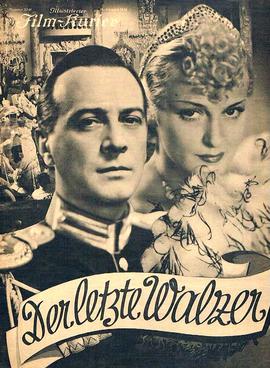
The Last Waltz is a 1934 German operetta film directed by Georg Jacoby, and starring Ernst Dumcke, Max Gülstorff, and Iván Petrovich. It is based on the 1920 operetta The Last Waltz by Oscar Straus. It was remade in English in 1936.
Crooks in Tails is a 1927 German silent film directed by Manfred Noa and starring Nils Asther, Suzy Vernon and Paul Heidemann. A sound film with the same title was released in 1937. The film's art direction was by Gustav A. Knauer.
The Merry Vineyard is a 1927 German silent comedy film directed by Jacob Fleck and Luise Fleck and starring Rudolf Rittner, Camilla Horn and Lotte Neumann. It was based on a play by Carl Zuckmayer, which was remade in 1952 as a sound film.
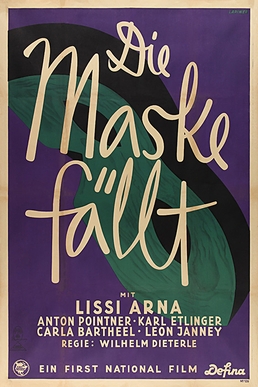
The Mask Falls is a 1931 American pre-Code drama film directed by William Dieterle and starring Lissy Arna, Anton Pointner and Karl Etlinger. It is the German-language remake of the 1930 film The Way of All Men.

The Night Without Pause is a 1931 German comedy film directed by Andrew Marton and Franz Wenzler and starring Sig Arno, Camilla Horn and Max Adalbert. It was made by the German subsidiary of Universal Pictures in partnership with Tobis Film. It was shot at the Johannisthal Studios in Berlin. The film's sets were designed by Fritz Maurischat and Gabriel Pellon. It is based on a popular stage farce by Ernst Bach and Franz Arnold, and was remade in 1952.

Retreat on the Rhine is a 1930 German musical comedy film directed by Jaap Speyer and starring Charlotte Susa, Hans Stüwe, and Hermann Böttcher. It was made as an operetta film which emerged as a popular genre following the arrival of sound film.

The Bogeyman is a 1953 West German crime comedy film directed by Carl Boese and starring Liselotte Pulver, Hans Reiser, and Harald Paulsen. It was shot at the Wandsbek Studios in Hamburg. The film's sets were designed by art director Mathias Matthies.

Alarm is a 1941 German crime film directed by Herbert B. Fredersdorf and starring Karl Martell, Maria von Tasnady and Paul Klinger. The production was made by the independent Aco-Film rather than one of Germany's major film companies. It was shot at the Althoff Studios and various locations around Berlin including Tempelhof Airport and the Karstadt Department Store. The film's sets were designed by the art director Bruno Lutz.
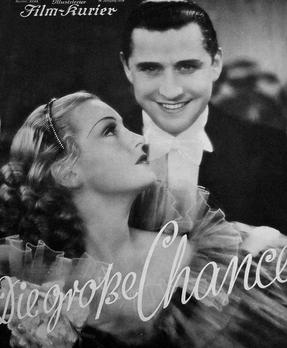
The Big Chance is a 1934 German musical comedy film directed by Victor Janson and starring Hansi Niese, Hans Söhnker and Jakob Tiedtke. It is part of the tradition of operetta films.

Dream of the Rhine is a 1933 German comedy film directed by Herbert Selpin and starring Eduard Wesener, Käthe Haack, and Hugo Fischer-Köppe. It was shot at the Johannisthal Studios in Berlin and on location in the Rhineland.
















